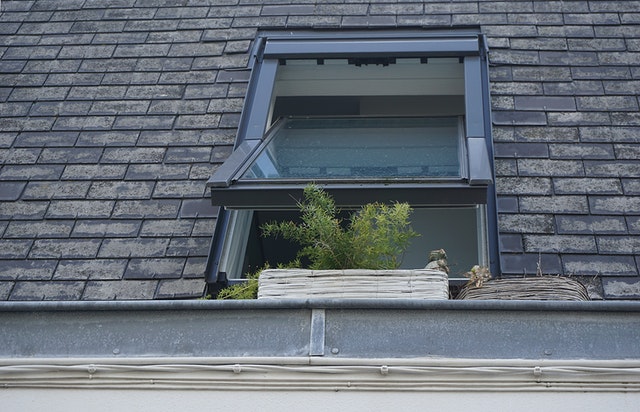Knowing your loft ventilation choices results in a higher quality roof system set-up, which eventually supports your business and makes clients happy. Sounds great, doesn’t it? The good news is that the installation of the proper loft ventilation methods can become easier when you are familiar with the estimation of the right amount of ventilation your building needs as well as the proper tools for the project.
The usage of a functional ventilation system, which helps your clients comprehend what you are doing, can also evoke trust and satisfaction among your clients. When you use the right attic ventilation system, you stand out from your competition. Instead of leaving your customers with a shingle board as a sample and a quote, you can set the bar high by informing them about other critical components of a roofing structure.
Here are some things that you should consider when it comes to attic ventilation choices:
Why Attic Ventilation Is Critical
A nicely-ventilated loft enables air circulation at the lowest and highest level of your building. Proper ventilation also helps guard the roofing structure from the inside in all temperatures and weather settings.
To help your customers be aware of the importance of attic ventilation, consider these points of discussion:
Energy Optimization. High amounts of heat in an attic without ventilation may force your A.C system to work excessively to compensate for the lack and your power bill will certainly go up. Good attic ventilation can help boost your house’s power efficiency by letting the heat transfer rate work instead. Dry and cooler temperature air removes abnormal amounts of humidity and heat.
Humidity Damage. Without proper circulation of dry air from outside through the attic, humidity and condensation may gather in the attic and result in several issues. Mold may develop in poorly ventilated spots and insulation affected by humidity levels may shrink its R-value, again affecting utility expenses. Humidity and condensation may also damage the roofing units and system supports.
Ice Dams. Poor ventilation can lead to the collection of heat from inside the home to the attic and together with the heat from the sun rays, the snow on the roof will melt. This melted snow will run down the lower level of the roof structure and then refreeze during nighttime when the temperature lowers. This freezing-unfreezing pattern can lead to ice deposits beneath the shingles, damaging the roof structure and ultimately result in internal damage e.g. stained drywalls and dampened insulation. Good ventilation, therefore, allows cool air from outside to enter the attic and control the heat accumulation inside, which ultimately controls the freezing and thawing pattern that usually leads to ice dams.

Considering Attic Ventilation Options
A top expert will install ventilation units depending on the client’s roof structure, style, and local weather settings – not take shortcuts and go for the easiest and cheapest option.
Installation Of Exhaust Ventilation
Adding exhaust ventilation at the highest level of your roofing to transfer as much hot and humid air out of the attic as possible is very important. Ridge venting units, similar to those in the GAF Cobra product collection, are usually added at the edge or peak of a roof to transfer hot air from the inside out. If you have a contemporary roof structure, there are several off-ridge exhaust choices, such as the GAF Master Flow range. Among these options, you will find power attic vents, wind turbines, and louvered roof units.
Inbound Ventilation
Inbound ventilation is added at the lowest level of the roof’s structure to let dry and cool air from the exterior move warm and humid air out of the exhaust fans. Keep in mind that exhaust airing requires inbound ventilation to make the system efficient. Inbound ventilation features attic and under eave fans e.g. GAF Master Flow range units.
The installation of inbound ventilation may also need you to work with other contractors such as carpenters to make sure that the right intake ventilation unit is set-up. You may also have to check that the painter hasn’t colored any intake vents at the edges and that any attic insulation or debris is removed. If working with other contractors isn’t convenient or you are having a new roof installation consider getting “Cobra IntakePro”, which is an intake fan that keeps roofers in place. An air slot, like a ridge vent, is also trimmed into the lower point of the roof bed to enable the free and repeat flow of air inside the attic.
Atmosphere-Matching Ventilation Units
Adding the proper units according to the local weather settings is key to making your ventilation system perform at its best. For instance, a product range like “Cobra Snow-Country” comes with an interior snow filtering unit for cooler and snow-exposed climates. Even without the hazard of frequent snowfalls, it is always a great idea to use a filtering ridge fan in cooler settings or higher mountain altitudes.
On the opposite end of the spectrum, the “Cobra Rigid Vent 3” live is aimed at regulating attic airing in warmer weather settings. The proper roofing units will function with the respective attic ventilation units to regulate and balance the temperature of roofing systems. This vent goes more than just enabling the heat and humidity to move out of the attic as it also boosts wind-powered infiltration of rain.
We have a wide range of attic ventilation units to choose from such as a hip, ridge, inbound/intake, power, and more off-ridge ventilation options for application in any roof structure and weather condition. Adding the proper ventilation units in a well-regulated system will help keep your client’s roofs nice and functional for many years to come.
